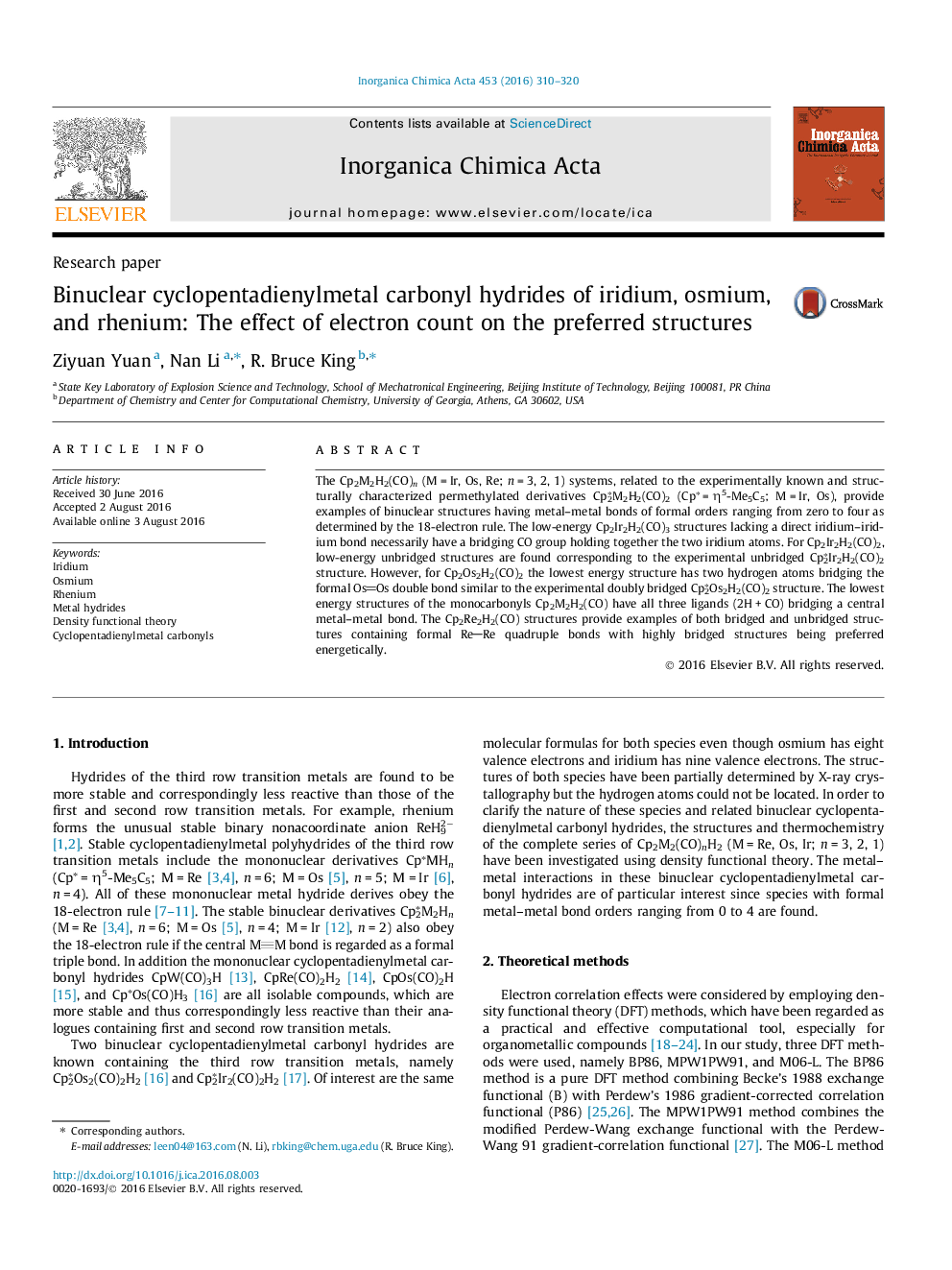| کد مقاله | کد نشریه | سال انتشار | مقاله انگلیسی | نسخه تمام متن |
|---|---|---|---|---|
| 1307437 | 1499136 | 2016 | 11 صفحه PDF | دانلود رایگان |
• Structures and thermochemistry of Cp2M2H2(CO)n (M = Ir, Os, Re; n = 3, 2, 1) have been studied by density functional theory.
• Cp2Ir2H2(CO)2 related to the experimentally known Cp∗2Ir2H2(CO)2 has terminal hydride ligands.
• Cp2Os2H2(CO)2 related to the experimentally known Cp∗2Os2H2(CO)2 has bridging hydride ligands.
• Triply bridging Cp2M2(μ-H)2(μ-CO) are energetically preferred for the monocarbonyls.
• New Cp2Re2(CO) structures with formal ReRe quadruple bonds are identified.
The Cp2M2H2(CO)n (M = Ir, Os, Re; n = 3, 2, 1) systems, related to the experimentally known and structurally characterized permethylated derivatives Cp∗2M2H2(CO)2 (Cp∗ = η5-Me5C5; M = Ir, Os), provide examples of binuclear structures having metal–metal bonds of formal orders ranging from zero to four as determined by the 18-electron rule. The low-energy Cp2Ir2H2(CO)3 structures lacking a direct iridium–iridium bond necessarily have a bridging CO group holding together the two iridium atoms. For Cp2Ir2H2(CO)2, low-energy unbridged structures are found corresponding to the experimental unbridged Cp∗2Ir2H2(CO)2 structure. However, for Cp2Os2H2(CO)2 the lowest energy structure has two hydrogen atoms bridging the formal OsOs double bond similar to the experimental doubly bridged Cp∗2Os2H2(CO)2 structure. The lowest energy structures of the monocarbonyls Cp2M2H2(CO) have all three ligands (2H + CO) bridging a central metal–metal bond. The Cp2Re2H2(CO) structures provide examples of both bridged and unbridged structures containing formal ReRe quadruple bonds with highly bridged structures being preferred energetically.
The Cp2M2H2(CO)n (M = Ir, Os, Re; n = 3, 2, 1) systems, related to the experimentally known and structurally characterized permethylated derivatives Cp∗2M2H2(CO)2 (Cp∗ = η5-Me5C5; M = Ir, Os), are shown by density functional theory to have formal metal–metal bond orders ranging from zero to four as determined by the 18-electron rule.Figure optionsDownload as PowerPoint slide
Journal: Inorganica Chimica Acta - Volume 453, 1 November 2016, Pages 310–320
